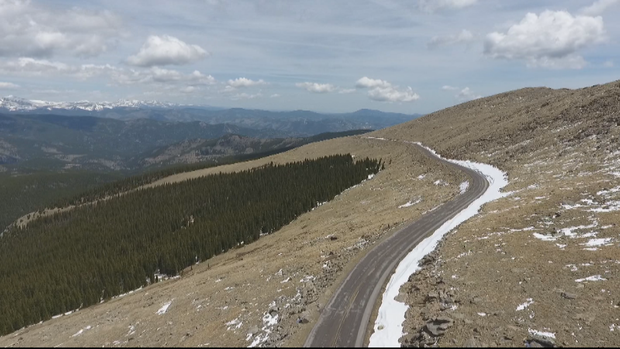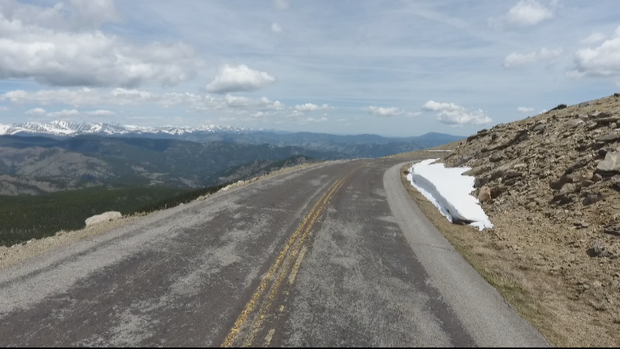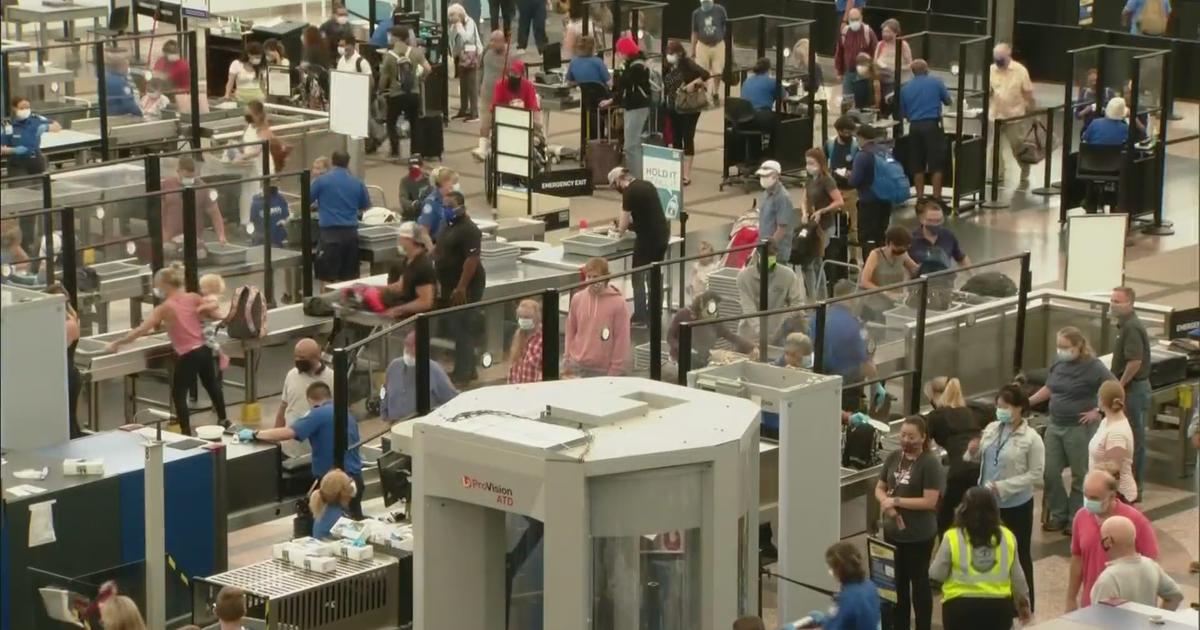90° In Denver, But Jackets Needed On Mount Evans & Trail Ridge Road
By Chris Spears
DENVER (CBS4) - The lower elevations of Colorado will climb into the 90s this Memorial Day Weekend with plenty of sunshine and Colorado blue sky.
But despite being closer to the sun, it'll be much colder in the higher altitudes such as on Mount Evans and Rocky Mountain National Park's Trail Ridge Road.
To grasp this concept we need a quick lesson in two concepts of physics.
Lesson #1
You can experience this by simply closing your eyes and looking toward the sun. That warm feeling on your cheeks is a direct transfer of radiant energy from the surface of the sun to your skin.
As the sun's energy heats the Earth that warmth then radiates upward, warming the lower atmosphere where we live. The further you move away from Earth's surface the colder it gets.
And while hot air does rise it cools while gaining altitude. That's because air expands the higher you go due to lower air pressure.
We call this adiabatic cooling in meteorology.
Lesson #2
Thinner air has less molecules of various gases that trap heat and collide with each other making kinetic energy. Thus thinner air can't heat very efficiently.
The thinner air is also why many people get high altitude sickness in the high country. Thin air has a lot less oxygen available for us to breathe.
If you're trying to determine the temperature in the mountains and don't have access to a forecast you can use something called the standard lapse rate of the atmosphere to make an educated guess.
It says that on average the temperature of the air will drop 3.6°F for every 1,000 feet of altitude gain.

So let's say you live in Denver at roughly 5,000 feet and you're planning to go to Mount Evans, which is approximately 14,000 feet.
That's a difference of 9,000 feet.
Take the standard lapse rate and multiply it by the difference in elevation.
3.6°F per 1,000 feet x 9,000 feet = 32.4°F (the thousand feet will cancel out, leaving just 3.6°F x 9)
Now subtract that from Denver's predicted high.
If it'll be 90°F today in Denver then the high should be about 57.6°F on top of Mount Evans.
Of course the lapse rate calculation can vary from day to day and it doesn't account for influences on temperature, such as cloud cover or the wind.
Meteorologist Chris Spears travels weekly in the CBS4 Mobile Weather Lab reporting about Colorado's weather and climate. Check out his bio, connect with him on Facebook or follow him on Twitter @ChrisCBS4.








